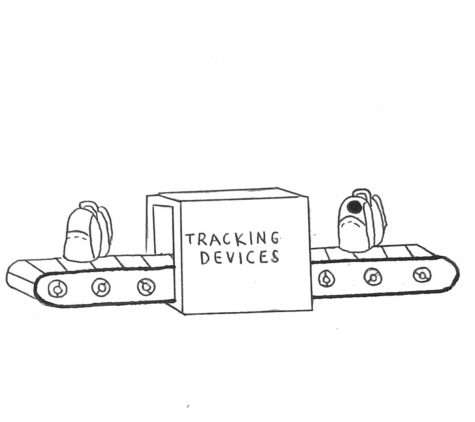 Every year, 11 and 12-year-olds enter their middle school years and fall upon a broad spectrum, varying physically, emotionally and developmentally, including in their math ability. Like these students, throughout elementary and parts of middle school, I was not confident in my math ability, believing that it would never be comparable to that of my peers. Similar to many middle schoolers, math concepts did not entirely “click” for me until eighth grade.
Every year, 11 and 12-year-olds enter their middle school years and fall upon a broad spectrum, varying physically, emotionally and developmentally, including in their math ability. Like these students, throughout elementary and parts of middle school, I was not confident in my math ability, believing that it would never be comparable to that of my peers. Similar to many middle schoolers, math concepts did not entirely “click” for me until eighth grade.
Typically, middle schools begin tracking students in math in sixth or seventh grade; however, students hit their stride in math at different periods in their development. It would be beneficial for middle schools to put off a math placement test until after eighth-grade, thus avoiding tracking students until they have had time to develop. Delaying math placements would create a more equitable math environment in middle school, allowing students to learn math at a measured pace while remaining eligible for advanced math courses in high school.
According to an article written by The Hechinger Report, a nonprofit newsroom covering how education policies affect students, math is the most tracked subject in New York schools. Around three-quarters of eighth-graders attend math classes that are separated by ability. Once math tracking occurs, students placed in less advanced courses are disadvantaged from the beginning and may not learn critical math concepts essential for higher education access. These New York districts are just one example of the math tracking that occurs throughout the U.S.
According to experts from the National Council of Teachers of Mathematics, math tracking’s pervasiveness may be due, in part, to the persistent belief that some people are good at math while others are not. Several experts on this council recommend that districts begin to eliminate middle school math tracking because of its inaccuracy and the inequality that has emerged as a result. The aforementioned Hechinger Report article also notes that minority and low-income students are overly represented in lower-level math courses. Unfortunately, these inequalities are hardly unique to the New York districts.
According to EdSource, a nonprofit news site focused on the effects of education policy, past research has indicated that math tracking in California middle schools has disproportionately held back low-income students and students of color from a more advanced course that they were arguably qualified for. At this point, their math options are limited and stay limited for the remainder of their schooling, thus holding these students back from reaching their fullest potential. For example, misplacement can result in some students being less qualified or limited in their options during the competitive college admissions process.
After recognizing these disparities in 2015, the California legislature passed The California Mathematics Placement Act, which, according to the Public Policy Institute of California (PPIC), was passed in an attempt to allow all students — especially those underrepresented — access to advanced math courses to better prepare them for college and careers. According to the California Placement Act, students must be placed in appropriate math courses as their ninth grade math class is a “crucial crossroads for future educational success.”
Although the California Placement Act was passed to decrease disparity and limit math tracking’s adverse effects, it leaves many aspects open to district interpretation, making it less effective. Recent research from the PPIC found that 94 percent of schools are still primarily using math placement tests to separate students. In general, potential growth in math ability and students’ current work ethic is not taken into enough consideration during the placement process. This process leads to students being placed in math courses that will not reflect their ability in later years.
Many teachers and parents believe that tracking middle schoolers in math is essential to avoiding boredom and a reduced work ethic in more advanced students. We live in a competitive culture where some parents strive for their children to be above average grade-level standards. In a 2016 NPR survey, nine out of 10 parents believed that their child was performing at or above grade level. However, a John Hopkins study reports that only around 24 percent of California students were either at or above the next grade level. Although these advanced classes cover more concepts faster, many students may not be able to absorb or thoroughly learn the material and therefore lack the math knowledge needed to achieve success in advanced high school math classes.
According to Edsource, many schools designed 8th-grade Algebra classes that lacked difficulty, leaving students severely unprepared for higher-level math in high school. A study of 24,000 California students by researchers at the Center for the Future of Teaching and Learning at WestEd found that out of students who took Algebra I in eighth-grade, one-third repeated the course, with only a small percentage passing it the second or even third time. In a February Nonfiction survey of Redwood students, 51 percent reported that they felt either unprepared or only slightly prepared to take Algebra I in middle school.
By separating students into accelerated and regular math classes, middle schools are placing undue pressure on students by implying that their middle school math placement will determine their future opportunities. More importantly, by tracking math students at such a young age, educators also underestimate the growth of most students’ ability after their sixth and seventh grades. Our local high schools offer such a robust math curriculum, and students should not be excluded from these courses just because they grasp specific math concepts later in middle school.
Categories:
Middle school math tracking subtracts from student potential
March 8, 2021
Tags:
More to Discover
About the Contributor

Justine Fisch, Senior Staff Writer
Justine is a senior at Redwood High School and a Senior Staff Writer for the Bark. She enjoys playing lacrosse, field hockey and spending time with her friends and family.






